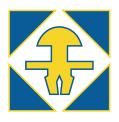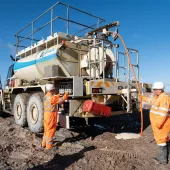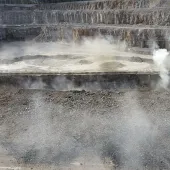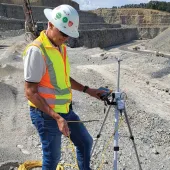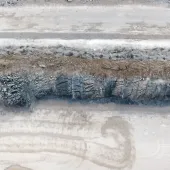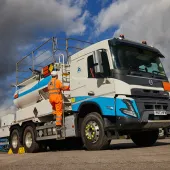Blast monitoring – Chore or helpful indicator?
It is said that in the 1960s a quarry manager’s response to a complaint about vibration might have been to visit the complainant’s home just before a blast and theatrically balance a three-penny bit (the12-sided brass coin valued at 1/80th of a pound that was in circulation until 1971) on its edge on the windowsill. If it remained upright after the blast, which it almost always did, the inference was that no vibration problems were being caused by his quarry blasting operations.
Early electro-mechanical seismographs gradually began to appear but were complex and difficult to use, with monitoring often being undertaken by independent consultants. By the mid-1980s digital seismographs had become commonplace. Expensive by today’s standards, and often big and heavy, they had to be taken to the monitoring location and set up before every blast, waiting to be triggered by the blast. Results were then printed out by the seismograph’s integral printer and the graphical record on the thermal paper was stored in the blast record book. Now, almost all seismographs are data-logging, connected to a computer after the blast and the results downloaded using the proprietary software supplied by the seismograph manufacturer. The quality of these programs varies from very basic to quite complex and there is also great variation in the ease or difficulty of use.
In 1975, in the UK, guidance regarding the maximum allowable level of Peak Particle Velocity offered by local authorities was often as high as 25mm/s. In fact, there were no British Standards relating to damage to structures from ground-borne vibration until 1992. The first was BS 5228: Part 4 dealing with piling operations. Then, in late 1993, BS 7385: Part 2 was issued, covering most forms of ground-borne vibration. Allowable levels are now often set as low as 6mm/s, totally removing any possibility of even the slightest cosmetic damage. However, blast monitoring still has to be carried out to show compliance, but now the emphasis is on reducing disturbance from low levels of ground-borne vibration and vibration from air over-pressure.
Studying the quarry’s blast records can often point the way to means of improving blast design, giving a reduction in vibration and air over-pressure, thereby maximizing fragmentation and resulting in more value for money from every blast. Thus, there are advantages to be achieved from carrying out vibration and air over-pressure monitoring even though it is time-consuming and the operator often has to work in cold, wet conditions, and has to travel outside the quarry to the various monitoring points.
Technology has moved forwards and now there are seismographs that may be left secured and unattended at the monitoring point with the ability to continuously monitor and upload results to a webpage so that anyone, anywhere, may, with a username and password, access the results. No software is required, removing the need to master often tricky software installation, difficult RS232/USB connectivity and quirky program applications. The savings in man hours made by using such a system are huge, especially when taken over a period of a few years. A further advantage is that the archived record may be made instantly available to personnel within the company or the local authority without the need to keep paper versions.
One such seismograph is the Accudata GVM2 available from Accudata Ltd. The GVM2 is one of the most powerful seismographs currently available and packed with features. The GVM2 is highly linear and records in 0.01mm/s increments with readings from a low of 0.03mm/s. It also supports a combined mode allowing continuous monitoring with a bar-graph record while, at the same time, having a user-defined trigger level that, when exceeded, simultaneously creates a tri-axial waveform event for a number of (user-defined) seconds.
The GVM2 has many options including an additional tri-axial geophone block, a GSM modem module, a printer module and a LAN module. Alarm functions are also available and include SMS text or e-mail warnings when levels are close to, or exceed user- defined levels. The GVM2 also has the ability be controlled and set up remotely and may be configured to send data to the Internet via GSM modem or Local Area Network connection.
A further possibility is system leasing, where, for a fixed monthly charge, a full wireless-ready seismograph system is supplied and a secure webpage is made available to allow viewing, printing or archiving of the blast events automatically after every blast. The monthly charge includes upgrades, any repairs that may be required and annual calibration.

